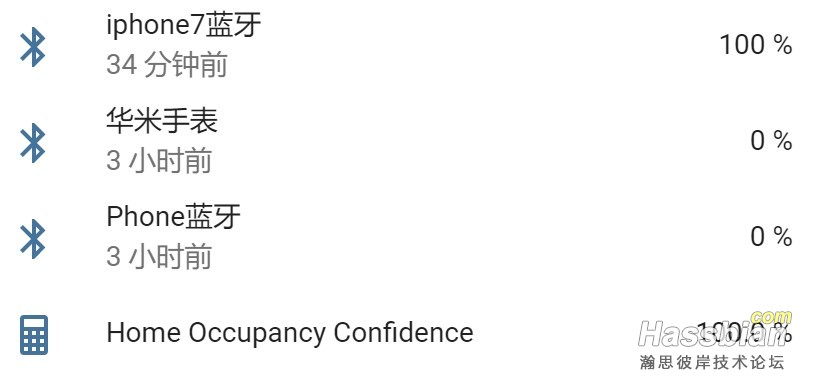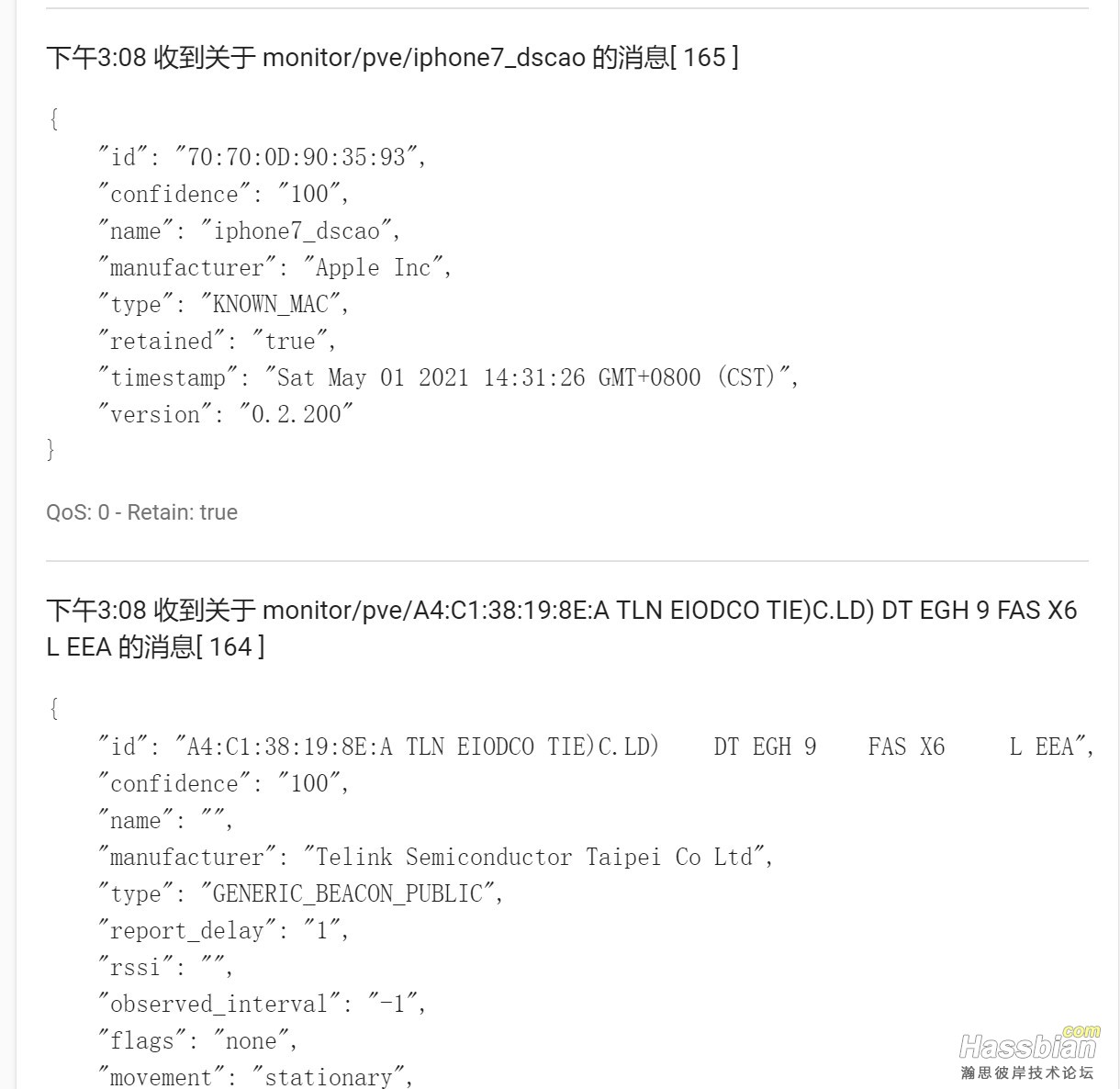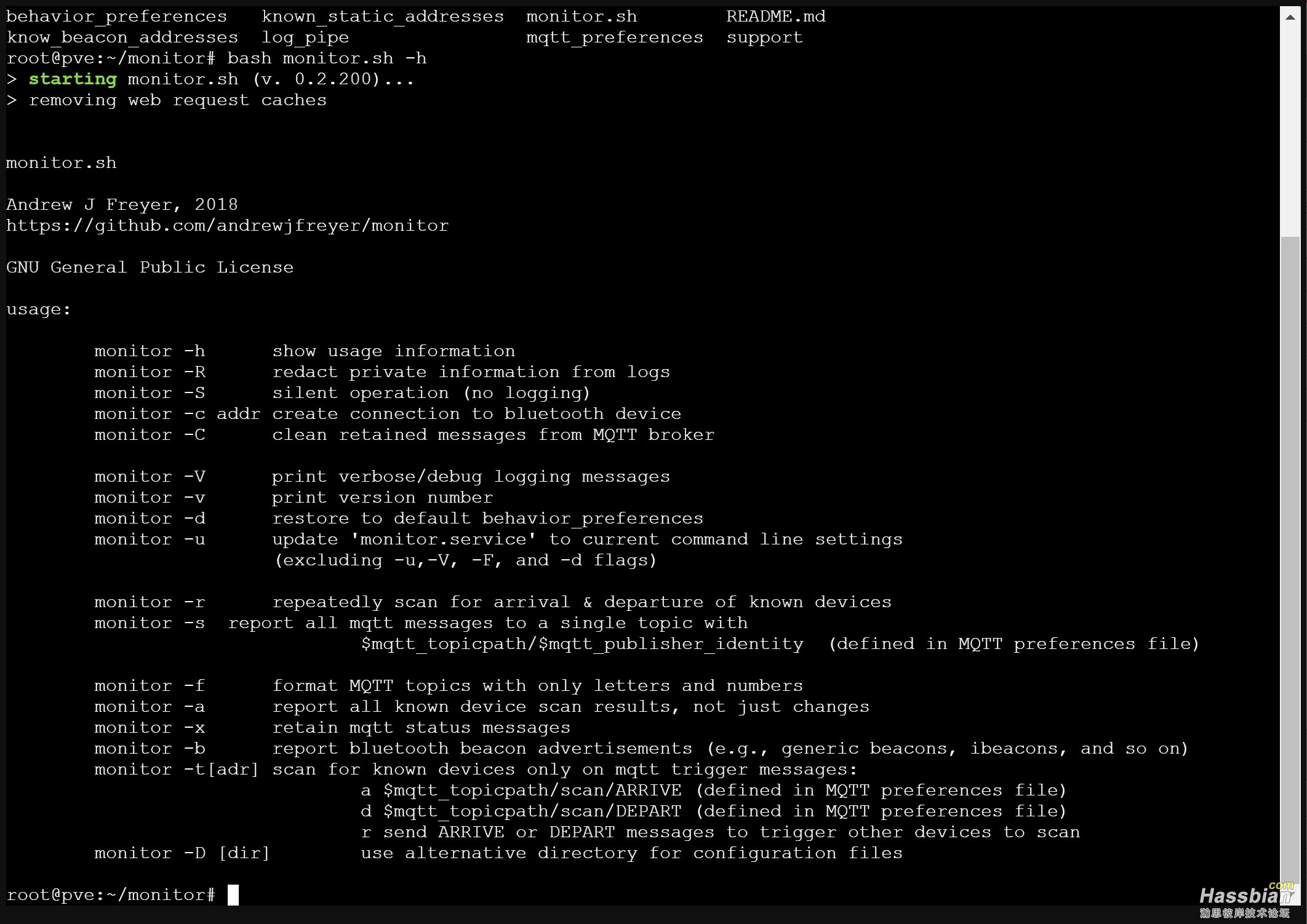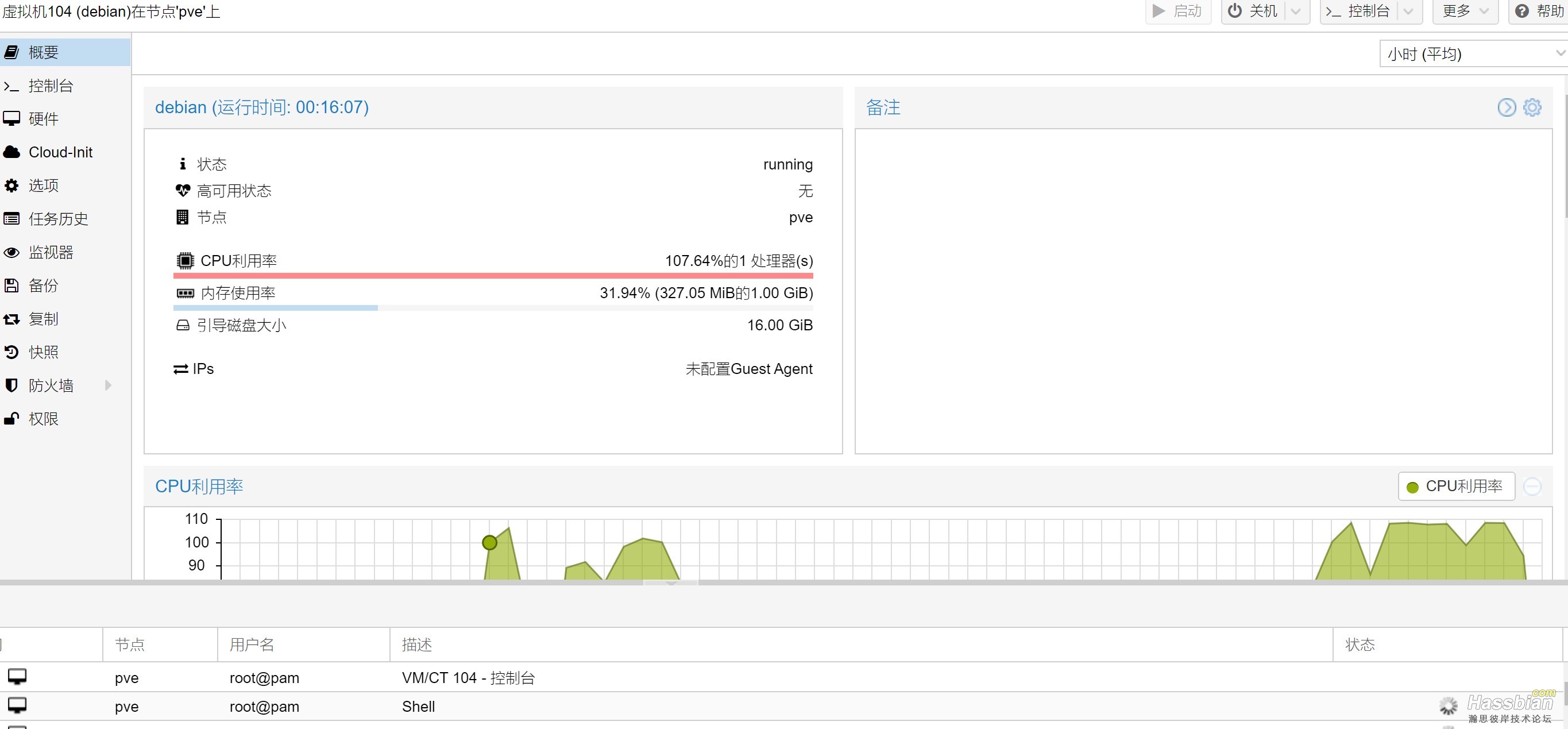本帖最后由 dscao 于 2021-7-26 01:23 编辑
一直用小米门锁的特定几种方式开锁作为回家触发条件,上提把锁延时2分钟室内人体无触发作为离家触发条件,也一直用得还不错。前几天看有大佬分享猫盘接蓝牙https://bbs.hassbian.com/thread-12756-1-1.html,自己也有一个,于是买了个蓝牙适配器CRS8510,结果也正常完成那样的操作。最后用来蓝牙追踪时发现是30秒扫描,想起有个更好的方案,于是找到帖子,研究后决定改回PVE主机安装蓝牙,最后成功了。发现房间的蓝牙信号还是100%,wifi的5G信号都不太行了。反应时间回家十秒内,离家十几秒至几十秒, mqtt.publish monitor/scan/arrive 与 monitor/scan/depart 配合后状态稳定后回家基本秒变,离家大概十秒变成90%,45%,0.0%。
[教程指南] 准确、及时、自动判断离家回家--多种方案试用后的最终选择
https://bbs.hassbian.com/thread-10096-12-1.html
对照XCray大佬的这个在PVE=ikuai+openwrt+nas+hassos环境中部署蓝牙monitor,检测离家回家。
一、PVE中安装蓝牙基本包
1、从web进入PVE管理页面中的shell运行:
apt update
apt install snapd
snap install core
snap install pi-bluetooth
参考:https://snapcraft.io/install/pi-bluetooth/debian
2、提示缺少两个组件,需要安装
apt-get install bluez (提示缺少 btmon)
参考:https://command-not-found.com/btmon
另一个按提示安装即可
二、安装mosquitto
apt-get update -y
apt-get install -y mosquitto-clients
顺带发送一下主机的CPU温度:
在pve的/etc/crontab/root中增加一行:
*/1 * * * * mosquitto_pub -h 192.168.X.X -u mqttuser -P mqttpassword -t pve/temp -m `sensors | tail -2 |cut -c17-20`
ha中增加:
sensor:
- platform: mqtt
name: CPUTemp
icon: 'mdi:thermometer'
state_topic: 'pve/temp'
device_class: temperature
unit_of_measurement: °C
三、执行脚本,配置完成PVE端
这里开始与原帖基本没什么区别了
cd ~
apt-get install git
git clone git://github.com/andrewjfreyer/monitor
cd monitor/
bash monitor.sh
脚本会在当前目录里生成默认的配置文件,按原帖修改:
mqtt_preferences 中填写mqtt的用户名和密码,主题路径,身份不填就默认pve,具体看pve系统设置吧
known_static_addresses 填入你的蓝牙设备的mac地址和名称
bash monitor.sh -h 按各种参数测试哪种最适合自己的,找到最适合的后:
bash monitor.sh -多个需要的参数 - u #参数保存到系统
配置完成后:
systemctl start monitor 启动服务
systemctl stop monitor 停止服务
四、homeassistant端配置传感器
按原帖操作即可




-----------------------2021.7.26更新:
最近PVE换成7.0版的,在安装这个的时候发现apt install snapd还不支持debian11,于是增加一个虚拟机装了个debian10,发现这个服务一旦打开cpu占用是非常高,难怪之前小主机温度比之前要高出很多。
具体原因还不清楚,打算后期主机上还是不用这个了,改到esp32中去。如果Esp32版的能有esphome的固件出来就方便了。

systemctl stop monitor 停止服务后

systemctl start monitor 启动服务后
|